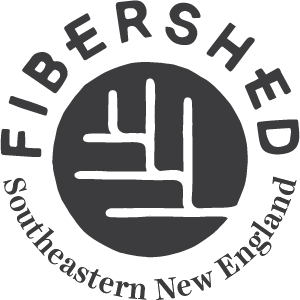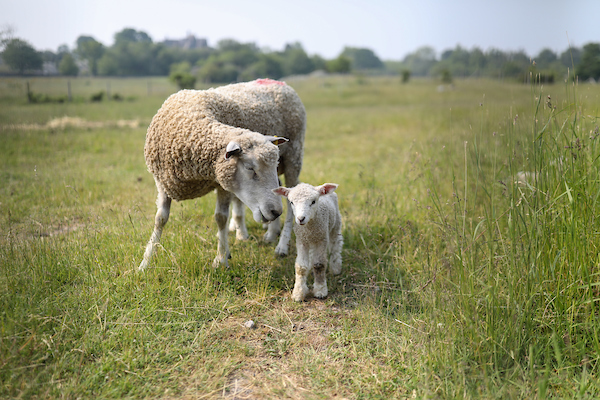
(Image: Maaike Bernstrom/Ocean Hour Farm)
Ocean Hour Farm is a center for education, scientific research, and demonstration of regenerative agricultural practices based in Newport, Rhode Island. The farm centers on the critical connection between soil and ocean health, exploring the intricate relationship between farming best practices and ocean health solutions. By utilizing a whole systems approach known as permaculture (permanent + culture), Ocean Hour Farm looks at the development of human ecosystems intended to be sustainable over a long period of time. This design methodology draws inspiration directly from nature because it provides the best examples of regeneration and resilience. This approach, though growing wider in popularity among fibersheds worldwide, is unfortunately, still not the norm for most farms.
Ocean Hour Farm’s fiber work centers on its flock of sheep that support the farm by enriching the soil through rotational grazing. The flock is comprised mainly of Lincoln Longwool, and Ocean Hour Farm is interested in exploring how this strong wool can replace nylon and other fossil fuel-based materials often combined with wool. The goal is to encourage the creation of products that would be both compostable and circular while reducing microplastics in the ocean.
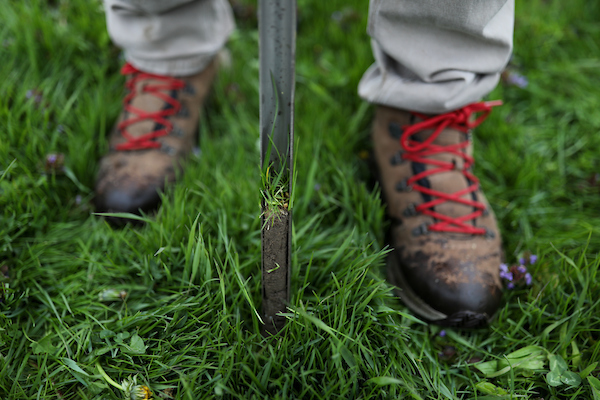
(Image: Maaike Bernstrom/Ocean Hour Farm)
While Ocean Hour Farm might seem like an imagined utopia to some, the work being done there is truly to benefit the local community. What this means is, if in search of creating a perfect fiber and food practice, this farm is creating the template for lots of mini utopias we need to pay attention to.
We caught up with Clara Boberg, Fiber Consultant for Ocean Hour Farm, to learn more about their work.
How did Ocean Hour Farm find its way into the world of fiber and sheep?
When assessing the viability of purchasing the property, the biggest question was, “Can this work? Can a farm demonstrate solutions for ocean health?” After protracted and thoughtful observation, the resounding answer was yes! The farm had a few sheep, which led us to explore how sheep can support ocean health in this region. The parcel size and texture, including its rocky outcroppings that need to be grazed, lent itself to sheep that will thrive in this terrain. Cows would struggle with the hills, valleys and rocks, and goats do not create fiber, which we wanted to explore. The sheep have two jobs: soil regeneration (including invasive plant management) and producing climate-friendly fiber. We honed in on increased carbon sequestration through rotational grazing and reducing microplastics by supporting a sustainable fibershed in Rhode Island and New England.
With 42 acres across two parcels and a rapid grass growth rate, we are still building our flock. We currently have 31 Sheep, mostly Lincoln Longwools, with a few different breeds from the prior land steward, SVF Foundation.
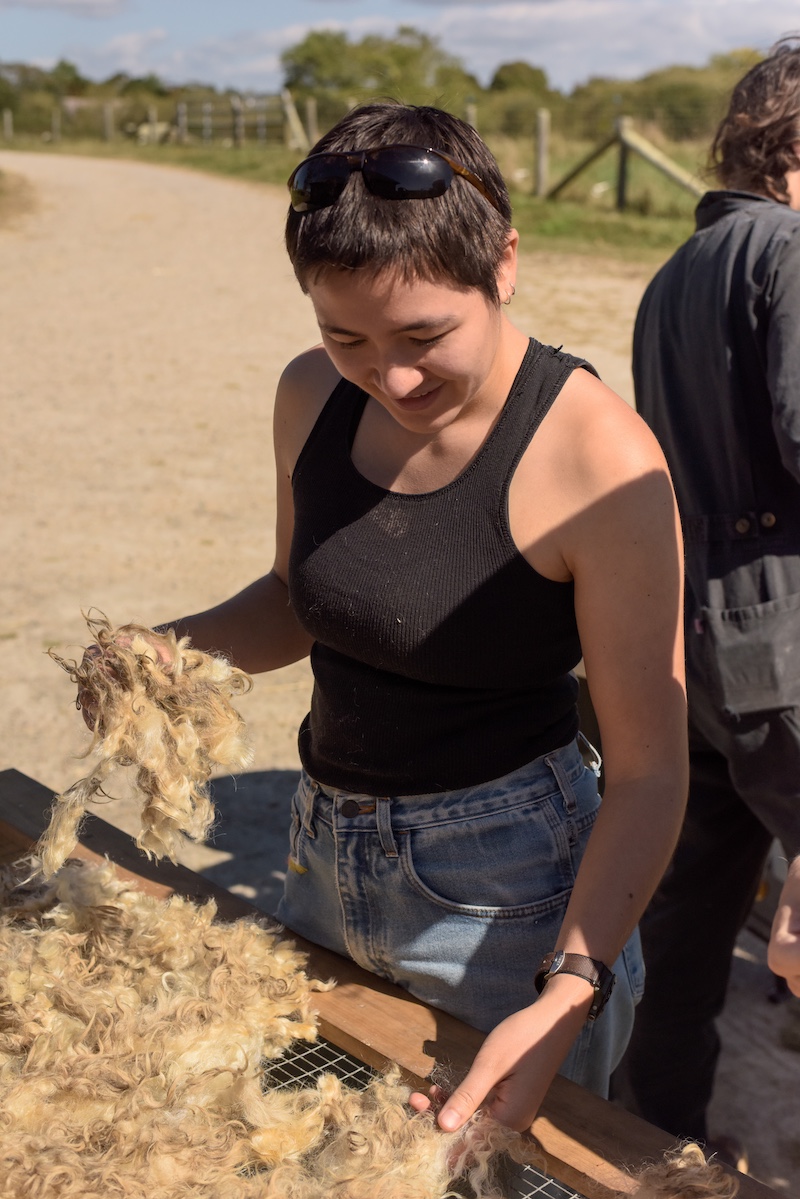
Can you talk about how the sheep at Ocean Hour Farm are adding to your mission of education and research?
The sheep are the farm’s charismatic messengers of our mission to show that how we treat the land impacts ocean health. Animal consumption and products are often vilified when it comes to climate change, but the system humans have designed is the problem, not the animals. By demonstrating the positive impact of rotational grazing on a landscape, we remind people that integrating animals into management systems benefits the land and sea.
Beyond grazing benefits, sheep specifically enable us to start conversations about the clothing we wear, the sponges we use, what a shoe insole is made from, how the material is processed and what happens at the end of an item’s lifecycle. Microplastics are a massive ocean health problem, and wool is a natural fiber that decomposes and has many potential solutions–if we can get it processed in small batches with less shipping!
We know you just launched a grant arm of Ocean Hour. Can you tell us more about it?
Yes! We launched the grant program in 2024 and will open our application for the second year from November 1, 2024, to January 31, 2025. We aim to empower the food and fiber sheds to transition to regenerative land management practices and support projects that broadly benefit the region. The current system that land and sea farmers operate within favors industrial-scale agriculture and an input-heavy approach. This design flaw has left our local producers without the appropriate infrastructure and support to be economically viable. Solving this problem will require a systematic approach, with policy change being a key component and long-term goal. Our grant program supports the small steps we can take right now to build the resiliency of our land and sea farmers and get us closer to realizing thriving food and fiber sheds that can fully embrace a regenerative approach. You can find more information at oceanhourfarm.org/grant-giving
Our first round of grantees includes two fiber projects: Hawk and Handsaw Farm in Portsmouth, Rhode Island, working on a flax-growing initiative and a partnership between two organizations, Woven Tide and Island Heritage Trust, to demonstrate the utilization of sheep for land management.
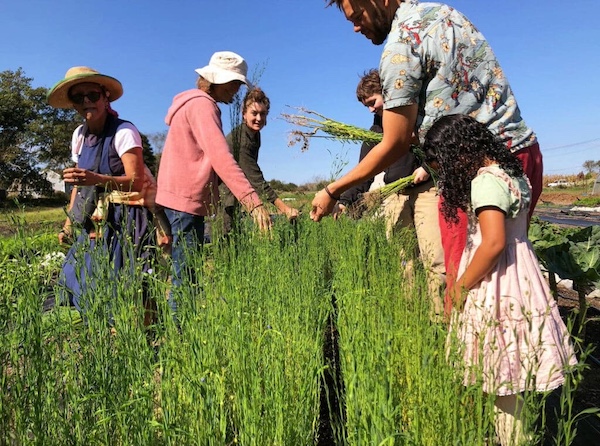
(Image: Hawk & Handsaw Farm)
What is your ultimate dream goal of working within this fibershed?
The ultimate dream is to create thriving, localized fiber systems that benefit farmers, consumers and ocean health. This means looking at the whole system and supporting projects that work towards this goal.
However, we are starting small and then expanding an important permaculture principle. With the support of the Southeastern New England Fibershed, we have identified scouring as a bottleneck in wool processing. Solving this issue will be particularly beneficial for helping small-scale farmers get their wool to market. Therefore, the first step toward the ultimate dream is to support the creation of a scouring hub in the next 2-3 years that will close the loop of regional production.
